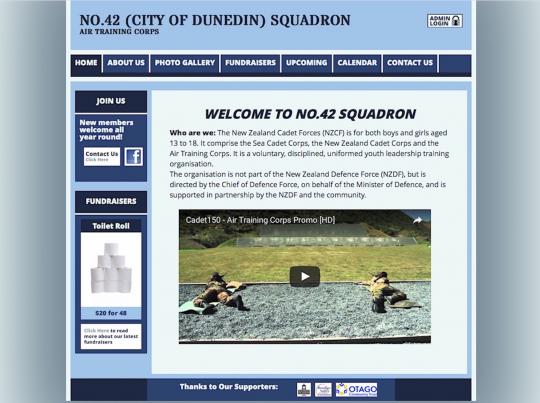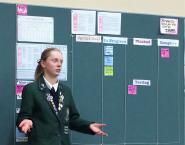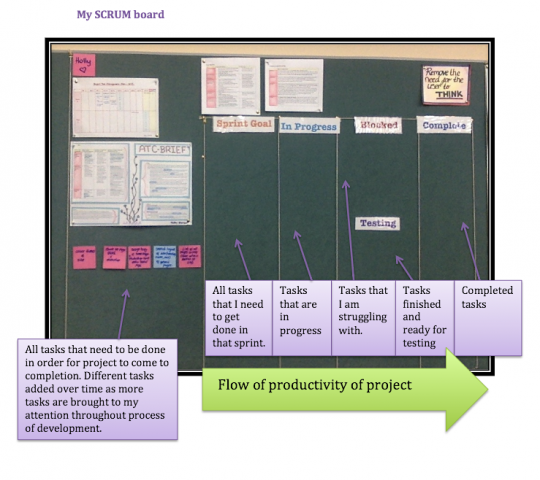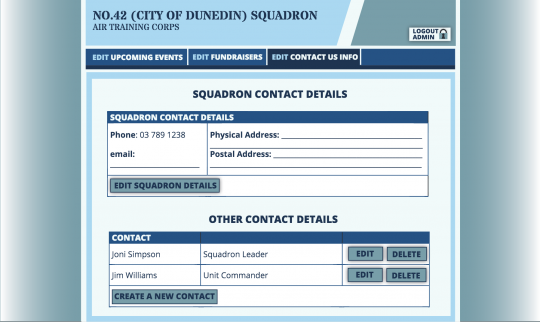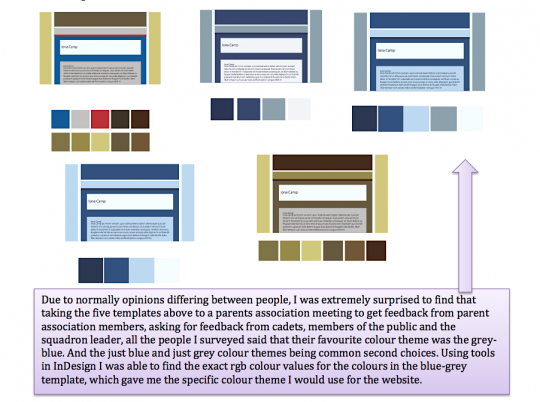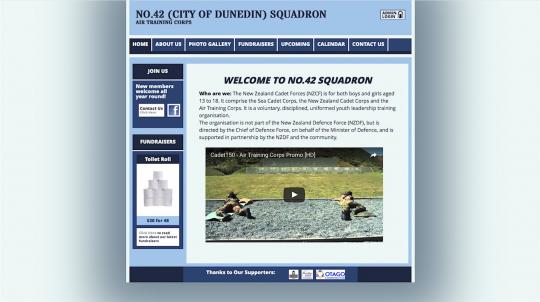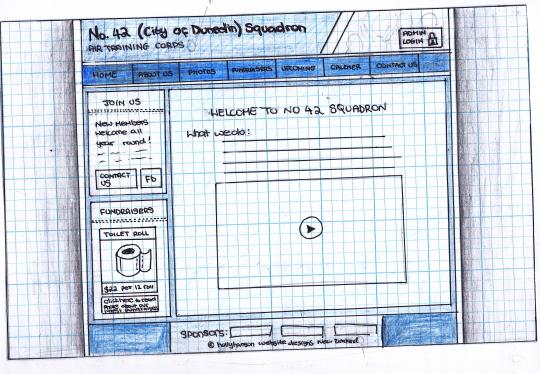Developing a website for a volunteer organisation
Holly Hanson of Columba College created a website for the No. 42 Air Training Corps (ATC) squadron, where her brother was a member and her parents were involved as volunteer organisers. It turned out to be a very successful scholarship project.
Project management
In Year 12, Holly had made a website for a veterinary practice using a sequential design (waterfall) process for project management purposes. This turned out to be not such a good idea as it involved following a sequence of steps with little interaction with stakeholders (apart from the initial meeting). Ultimately it meant extra work for Holly because she had to go back and unravel problems that would have been better addressed earlier.
Exploring project management models
At the beginning of Year 13, Holly’s class did a field trip to Christchurch, where they visited a number of companies involved in developing software. Most said that they preferred agile software development to waterfall models because it supports on-going stakeholder interaction and testing.
These companies found that for complex projects with multiple specifications, it is unrealistic to consider every stakeholder requirement in the initial stages of a project because there are so many. And leaving most testing until the later stages of development is a recipe for disaster because there will be so many faults to remedy.
One company explained that they use user stories to engage their stakeholders, asking them to describe their requirements for the outcome under the headings: "As a …", "I want to be able to …", "So that I can …". As a methodology, user stories work well with agile software development, providing a means of collecting stakeholder views succinctly and coherently.
SCRUM boards are used as a tool for managing product development. SCRUM supports teams collaborating on a project by allowing them to take incremental and iterative steps, with the flexibility to change direction as new requirements surface. Boards are used to depict stages and progress, and online or face-to-face meetings of team members take place regularly.
Managing the website development project
For her own project, Holly created a table of user stories. By analysing this information and referring back to it regularly, she was able to ensure that her outcome (the completed website) met all her stakeholder’s needs.
Holly also adapted the SCRUM board concept for her project, listing two-week "sprints", or manageable short-term tasks. She added ongoing testing for each aspect of the website, moving items into the "completed" section of the board when done. Once a month she attended the No.42 Squadron’s Parents’ Association meetings to gain their feedback.
Once a fortnight Holly and her classmates would have stand-up meetings at which feedback would be given and suggestions made that could progress their projects. Holly’s SCRUM board would provide her with the up-to-date information she needed for these meetings.
Making the website easy to maintain
Responsibility for keeping the website of a volunteer organisation up-to-date and interesting often falls to someone without coding knowledge or skills.
For this reason, and following her earlier experience with the vet website, Holly concluded that what was needed was a dynamic website. This would ensure that data could be easily updated via an interface, and that chunks of HTML code could be reused across multiple pages.
Functional modelling
Holly critically examined existing ATC websites, categorising their attributes using a PMI (plus/minus/interesting) framework. She then synthesised this information, her own growing knowledge of websites and coding, and stakeholder requirements to develop concepts for the proposed outcome. She mocked these up as pencil sketches and then wireframes using InDesign.
Critically reflecting on how she could best functionally model her concepts saved her time in the long run. For example, to finalise the colour scheme she mocked up a standard looking website in a number of different colour combinations and asked her stakeholders to decide which they preferred. This focused everyone’s thinking and a consensus was quickly arrived at. She then selected possible fonts and used them in the mocked-up pages to gain further informed stakeholder feedback.
Ensuring fitness for purpose in its broadest sense
Fitness for purpose in its broadest sense – a level 8 concept – refers to the fitness of the outcome itself and of the practices used to develop it.
Some of the ways in which Holly ensured that her outcome met this stringent condition include:
-
Usability
Her decision to use a dynamic website, functional modelling, frequent checking with stakeholders and responses to feedback resulted in a completed outcome that even those who were not particularly tech savvy could use. When she presented them with the finished website, the squadron organisers were genuinely enthusiastic because the interface was easy and logical to use. -
Security
Access to the interface that allows information to be added or updated is via username and password. -
Maintenance
Comments embedded in the code not only helped improve the efficiency of the coding process by making it easier to fix errors, they meant that if someone later wanted to modify the site, they would easily be able to find their way around the back. -
Table and field names followed the no-caps-no-gaps naming convention
File subcategories distinguish between the various parts of the site (for example, administration and images), meaning that calling files was easy for Holly and for anyone who needs to make modifications. -
Ethics
Permission was obtained for the use of the ATC logo, the squadron organisers’ contact details, and all imagery. -
Cultural appropriateness of trialling procedures
As a volunteer herself and a busy year 13 student, Holly knew that she needed to find ways of getting regular feedback from the squadron leaders without adding to their workloads. The squadron held regular monthly meetings so she attended these and was given a brief slot each time to obtain feedback. -
Functionality
The website was tested and shown to work on a range of commonly used browsers and devices.
Assessment
Achieving at scholarship level requires students to demonstrate synthesis, integration, justification, and critical reflection on their technological experiences. As Explanatory Note 2 of the Scholarship Technology Performance standard makes clear, this will involve bringing together learning from across all three strands of the curriculum:
- undertaking technological practice to develop a technological outcome(s) that is justified as fit for purpose in the broadest sense and shows elements of elegance and/or originality
- demonstrating understandings of concepts underpinning technological knowledge
- demonstrating understandings of the nature of technology.
Scholarship projects are also assessed against level 3 achievement standards, often selected from the suite of generic technology standards. Holly’s project was assessed against:
- AS 91609 Undertake project management to support technological practice
- AS 91608 Undertake brief development to address an issue within a determined context
- AS 91610 Develop a conceptual design considering fitness for purpose in the broadest sense
- AS 91619 Demonstrate understanding of the application of a technical area to a specific field
In the case of a non-scholarship student engaged in a similar project, the teacher could select from the above standards or any other level 3 standards depending on the focus (for example, if technological modelling is a focus, AS91612 could be a good choice) and/or the available evidence.
